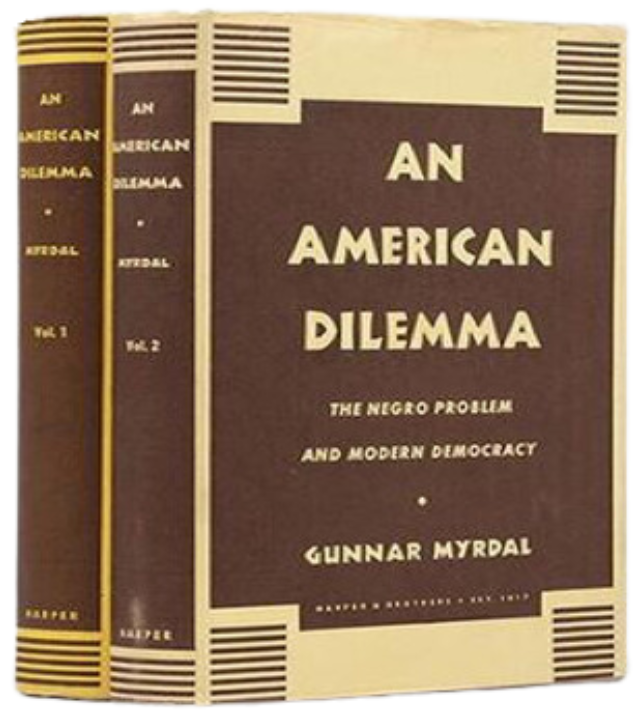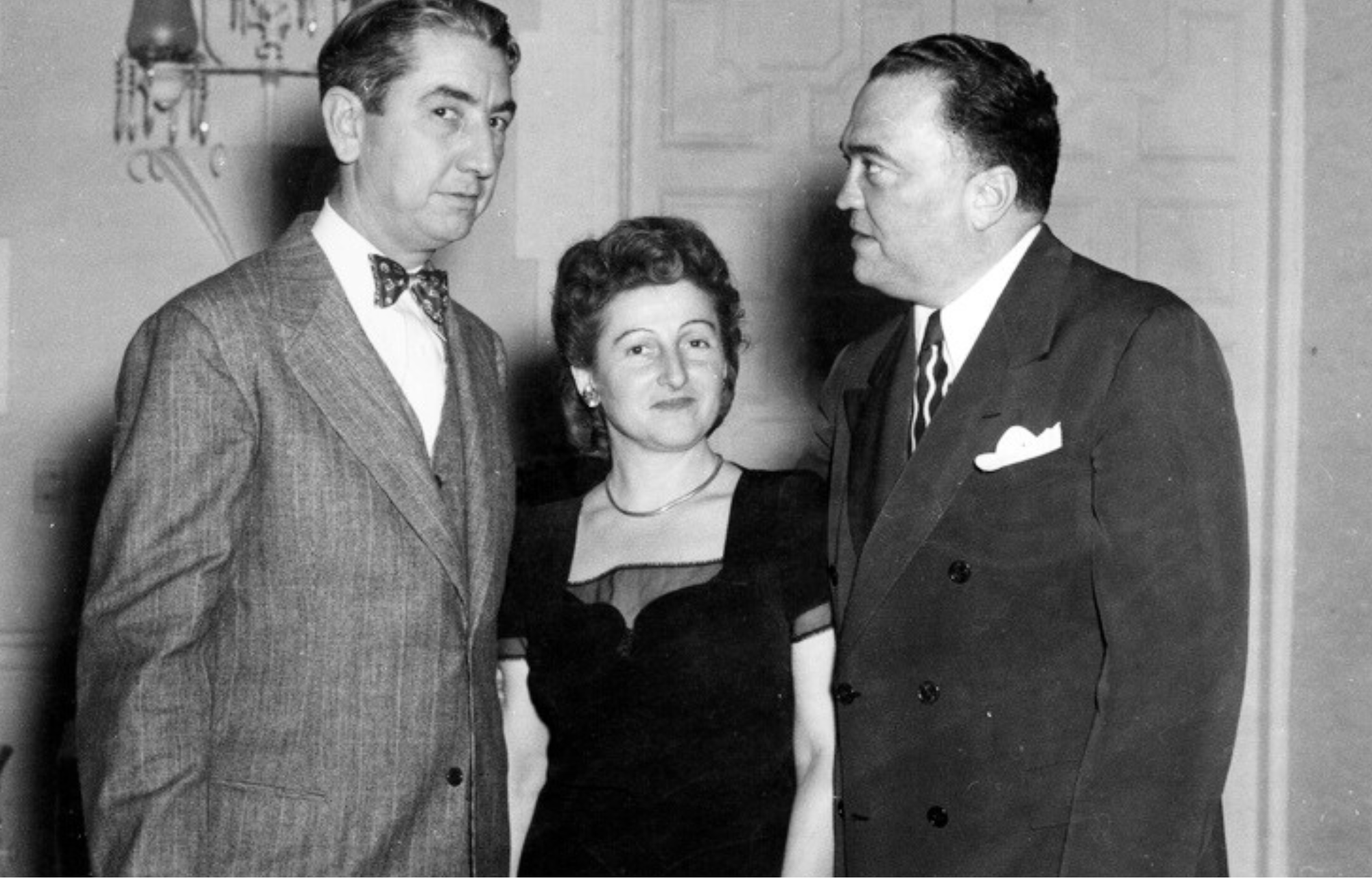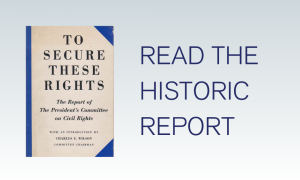TO SECURE THESE RIGHTS
By Steven F. Lawson, Professor Emeritus, Rutgers University
PART VIII: THE COMMITTEE AT WORK
The PCCR approached its task with a certain amount of ambiguity. Truman used the terms civil rights and civil liberties interchangeably with racial discrimination and religious bigotry. Whereas today we think of civil rights as those covered under the Thirteenth, Fourteenth, and Fifteenth Amendments of the Constitution and civil liberties as deriving from the Bill of Rights, in Truman’s era the categories were more fluid. Presidential aide Phileo Nash remembered that the “use of the word ‘civil rights’ … came about in the course of our staff studies. We thought it advisable to find a term that was slightly fresh, and the word civil rights was not used for this function at that time.55 This left the committee some leeway to chart its own course in exploring civil rights. Its members agreed that republican governments had been established to secure and protect four inalienable rights. The right to safety and security of the person meant that society could not imprison or execute citizens without due process of law. The right to citizenship conferred the right to vote and to serve in the military in defense of the country. The right to freedom of conscience and expression depended on the free marketplace of ideas. The right to equal opportunity gave individuals the chance to develop their talents and reap their rewards.56

An American Dilemma by Gunnar Myrdal
Although the PCCR blazed new trails, it did have an important guidepost to help direct it. The publication in 1944 of Gunnar Myrdal’s An American Dilemma not only provided a massive amount of factual information about race relations, but it also furnished a framework to interpret the data, one that postwar liberals adopted in approaching civil rights. Myrdal conceived of the racial problem as a moral conundrum stemming from the gap between the American creed of equal opportunity and the reality of discrimination. When well-meaning Americans came to see the disjuncture between their core values and their bigoted behavior, Myrdal believed, their consciences would lead them to modify their behavior and conform to democratic principles. Despite cataloging a long list of injustices, An American Dilemma optimistically concluded that through a combination of federal intervention and popular education the campaign against prejudice could succeed.57 Although the committee cited Myrdal only once in its final report, the document produced by the POCR was infused with his central assumptions. Myrdal’s words reverberated in the PCCR’s statement that “the pervasive gap between our aims and what we actually do is creating a kind of moral dry rot which eats away at the emotional and rational bases of democratic beliefs.”58
The PCCR spent most of the year preparing its findings. The group decided to maintain a low profile while performing its task. It held public hearings in Washington, D.C., which drew approximately forty witnesses, but decided against going on the road to various racial hot spots around the country. Instead, the group solicited written comments from 184 organizations and 102 individuals and received a huge number of responses. The staff provided committee members with over three hundred pages of reports, countless printed publications, and more than a thousand pages of transcriptions of committee hearings and deliberations.59 Although the committee sought to avoid publicity, and in early 1947, when a brutal lynching occurred in South Carolina, the administration had the committee investigate it, thereby shifting pressure from civil rights groups off the White House.60
Committee meetings, a total of ten in all, were generally well at tended, and Wilson proved a congenial chair, open to all sides of an issue. At the February 6 meeting in Washington, white committee members learned firsthand of the pervasiveness of racial discrimination. When Sadie Alexander went with her colleagues for a meal at a restaurant, she was refused service. “I never thought this could happen to a woman like you,” a shocked Wilson commiserated with her. Washington, D.C. hotels were also segregated, but the committee staff convinced the Statler Hotel to accommodate Alexander and Tobias.61 This would be just the beginning of Wilson’s and the panel’s education.
The first witnesses to testify before the committee did so behind closed doors. Assistant Attorney General Turner Smith, head of the Justice Department’s Civil Rights Section, catalogued the complaints his bureau had received. Lynching topped the list, followed by Klan intimidation and discrimination in voting, transportation, public accommodations, and law enforcement. Smith’s boss, Attorney General Tom Clark, who had prosecuted high-visibility racial crimes, nevertheless told the committee that moral education was the most important factor in combating bias. He did not discount the necessity for legislation to punish unacceptable behavior, however. Clark called upon the group to recommend beefing up the U.S. Criminal Code, specifically Title 18, Sections 51 and 52, which Congress had enacted during Reconstruction but which the courts had interpreted narrowly as an enforcement instrument against lynching and mob violence.62

U.S. Attorney General Tom C. Clark (left) with FBI director J. Edgar Hoover (right). The picture was taken during the 52nd annual convention of the International Association of Chiefs of Police (December 1945). Courtesy Truman Library, photo 2012-2338
J. Edgar Hoover endorsed Clark’s remarks about the value of education to change people’s behavior, but he was far less sympathetic to civil rights than was Clark. The FBI director commanded enormous power in Washington as well as a public relations network that bolstered his image as the nation’s number one G-man. He maintained close contacts with white southern police, and the FBI relied on local law enforcement officials to perform its high-priority duties of apprehending car thieves, kidnappers, and bank robbers. It was true that current federal laws on the books made it difficult, as Clark pointed out, to convict civil rights violators. The FBI director proved uncharacteristically timid, however, when it came to civil rights. He employed only three blacks on the bureau payroll, not as investigative agents, but as his personal chauffeur and menial office help. Hoover held a dim view of the moral character of African Americans, and when members of the PCCR inquired why the FBI had not sent a black agent to investigate the murders in Monroe, Georgia, Hoover revealed a great deal about his racial attitudes. He asserted that “the local Negro I think would be more disinclined to talk to [a black agent] because the particular type of Negro living in Monroe was a very ignorant type of Negro.” [emphasis in original]63
Two months later in April, representatives of civil rights groups had their turn before the committee, this time in open hearings. In contrast to government witnesses, they made a stronger case for federal legislation than for education as the main weapon in attacking racial discrimination. The NAACP’s Walter White spoke to listeners of the Mutual Radio Network, which broadcast the hearings live. Referring to the practitioners of racial violence and white supremacist politicians in the South, he passionately declared: “Hitler is presumably dead, but his spirit lives on in America today.” He suggested legislation as the “only tool to implement the struggle to gain full citizenship.” Lester Granger, director of the Urban League, pointed out that in addition to enacting legislation aimed at the South, Washington had a responsibility to clean its own house by removing barriers to black employment within the federal government. As a result of expansion during the New Deal and World War I, the federal government had become one of the major employers in the United States.64 The parade of civil rights advocates appearing before the committee (the committee did not hear from outright opponents) supported urging the federal government to come up with new remedies to deal with racial inequality without denying the value of education.
PREVIOUS: Part VII – Committee Members
NEXT: Part IX – The First Freedom Rides
Navigate through this essay by section: 1 2 3 4 5 6 7 8 9 10 11 12 13 14 Notes


